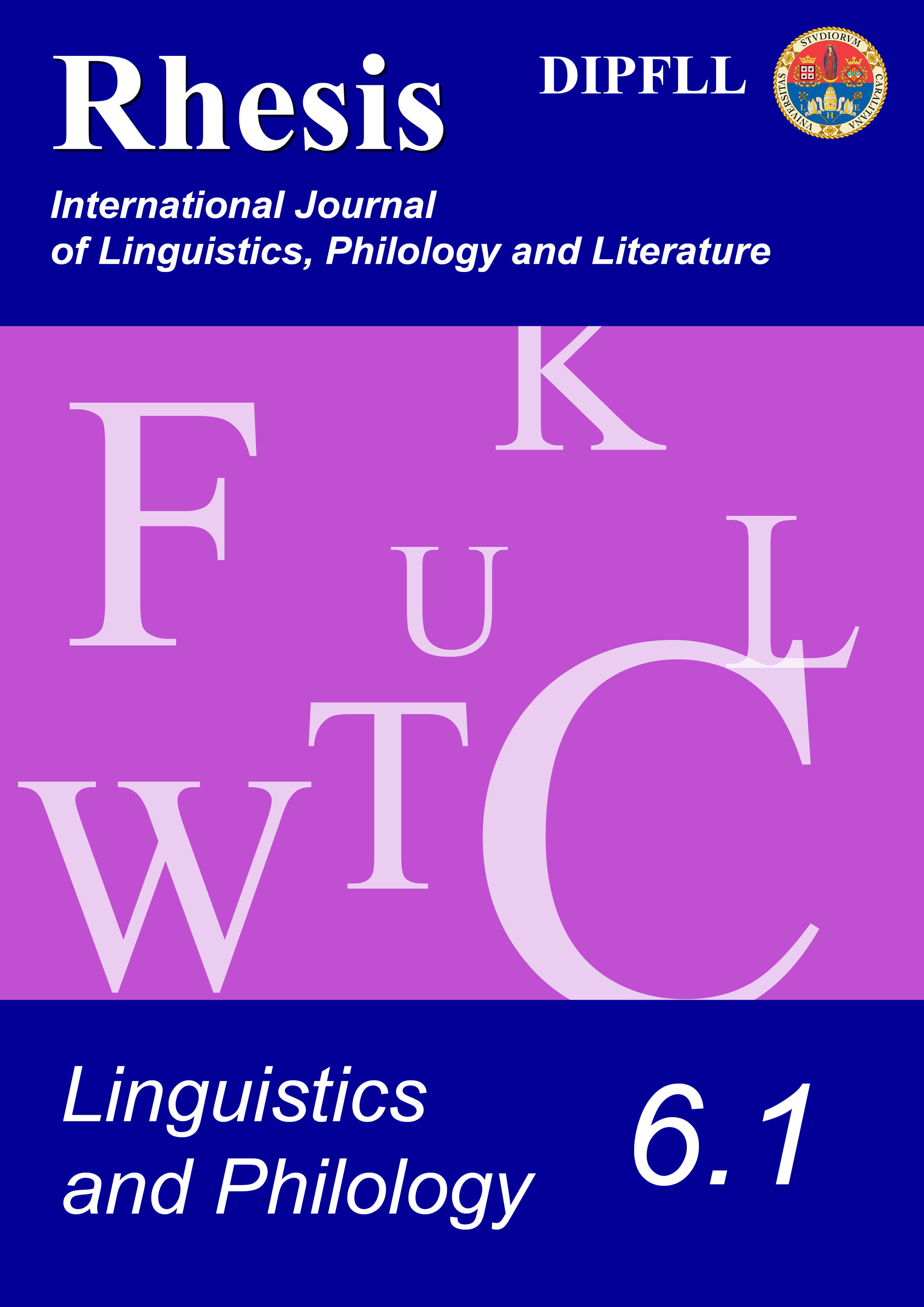Marred in transmission? A new proposal for the questioning sequence in the Old Norse Svipdagsmál
Abstract
The Old Norse Svipdagsmál is a composite piece of eddic poetry which comprises two complementary poems, Grógaldr and Fiǫlsvinnzmál. These two poems date to the 13th century, but they are only preserved in late paper manuscripts (17th-19th century). The text transmitted in the manuscripts shows several signs of corruption, and many aspects of its form and content have been subject to debate. Among other concerns, some incongruities have been pointed out regarding the progression of the core section of Fiǫlsvinnzmál (sts 7-42). Möller (1875) attempted to resolve these apparent structural anomalies by revising the arrangement of twelve stanzas (sts 13-24). Through a detailed structural analysis of the poem, this article shows that Möller’s proposal is not entirely satisfactory, and proposes a new arrangement of stanzas 9 to 40 which removes the oddities inherent in the original sequence. The structure of the rearranged sequence follows a neat and plausible pattern and appears quite consistent with the poet’s taste for symmetry and numerological references which is apparent throughout the poem.
Downloads
References
ARNAMAGNAEAN Edda (1787), Edda Saemundar hinns fróda: Edda rhythmica seu antiquior, vulgo Saemundina dicta, Pars I. Copenhagen: Gyldendal.
ARNAMAGNAEAN Edda (1818), Edda Saemundar hinns fróda: Edda rhythmica seu antiquior, vulgo Saemundina dicta, Pars II. Copenhagen: Gyldendal.
BERGMANN, Friedrich Wilhelm (ed.) (1874), Vielgewandts Sprüche und Groa’s Zaubersang (Fiölsvinnsmal-Grougaldr), zwei norränische Gedichte der Sæmunds-Edda. Strasburg: Trübner.
BOER, Richard Constant (ed.) (1922), Die Edda: mit historisch-kritischem Commentar, Einleitung und Text. Haarlem: Tjeenk Willink.
BRAY, Olive (ed. and transl.) (1908), The Elder or Poetic Edda, commonly known as Sæmund’s Edda, Part I. The Mythological Poems. London: Viking Club.
BUGGE, Sophus (ed.) (1867), Norrœn fornkvæði. Islandsk samling af folkelige oldtidsdigte om nordens guder og heroer, almindelig kaldet Saemundar Edda hins fróda. Oslo: Malling.
CLEASBY, Richard and GUDBRAND Vigfusson (1874), An Icelandic-English Dictionary. Oxford: Clarendon Press.
DETTER, Ferdinand and Richard HEINZEL (eds) (1903), Saemundar Edda: mit einem anhang, I: Text. Leipzig: Wigand.
FINNUR Jónsson (ed.) (1932), De Gamle Eddadigte. Copenhagen: Gad.
GERING, Hugo and Barend SIJMONS (eds) (1888), Die Lieder der Edda, Band 1. Text. Halle: Buchhandlung des Waisenhauses.
GERING, Hugo and Barend SIJMONS (1927), Die Lieder der Edda, Band 3. Kommentar zu den Liedern der Edda, Erste Hälfte: Götterlieder. Halle: Buchhandlung des Waisenhauses.
GRUNDTVIG, Svend (ed.) (1856), Danmarks Gamle Folkeviser. Vol. II. Copenhagen: Samfundet til den danske literaturs fremme.
GRUNDTVIG, Svend (ed.) (1874) [1868], Sæmundar Edda hins fróða. Den ældre Edda. Copenhagen: Gyldendal.
GUDBRAND, Vigfusson and F. York POWELL (eds and transls) (1883), Corpus Poeticum Boreale: The Poetry of the Old Northern Tongue from the Earliest Times to the Thirteenth Century. Vol. I, Eddic Poetry. Oxford: Clarendon Press.
HILDEBRAND, Karl (ed.) (1904), Die Lieder der älteren Edda, zweite Auflage umgearbeitet von Hugo Gering. Paderborn: Ferdinand Schöningh.
JÓNAS, Kristjánsson and VÉSTEINN Ólason (eds) (2014), Eddukvæði II. Hetjukvæði. Reykjavík: Hið íslenzka fornritafélag.
LÜNING, Hermann (ed.) (1859), Die Edda: eine sammlung altnordischer götter- und heldenlieder. Zürich: Meyer & Zeller.
MÖBIUS, Theodor (ed.) (1860), Edda Sæmundar hins fróða: mit einem Anhang zum Theil bisher ungedruckter gedichte. Leipzig: Hinrichs.
MUNCH, Peter Andreas (ed.) (1847), Den Ældre Edda: Samling af norrøne oldkvad, indeholdende Nordens ældste gude- og helte-sagn. Oslo: Malling.
NECKEL, Gustav (ed.) (1927) [1914], Edda. Die Lieder der Codex Regius nebst verwandter Denkmälern I: Text. Heidelberg: Winter.
ÓLAFUR, Briem (ed.) (1968), Eddukvæði. Reykjavík: Skálholt.
RASK, Rasmus Kristian (ed.) (1818), Edda Saemundar hinns fróda. Collectio carminum veterum scaldorum saemundiana dicta, curavit Arvid August Afzelius. Stockholm: Elmén.
ROBINSON, Peter Max Wilton (1991), An Edition of Svipdagsmál. Oxford: Oxford University (PhD dissertation).
SIMEK, Rudolf (2007), Dictionary of Northern Mythology, translated by Angela Hall. Cambridge: D.S. Brewer (first published in 1984 as Lexikon der germanischen Mythologie. Stuttgart: Alfred Kröner).
Secondary sources
BUGGE, Sophus (1861), “Forbindelsen mellem Grógaldr og Fjölsvinnsmál oplyst ved Sammenligning med den dansk-svenske Folkevise om Sveidal”, in Forhandlinger i Videnskabs-Selskabet i Christiania, 1960, 123-140.
EINAR Ól., Sveinsson (1975), “Svipdag’s Long Journey. Some Observations on Grógaldr and Fjölsvinnsmál”, in Bo ALMQVIST, Brendán MACAODHA and Gearóid MAC EOIN (eds), Hereditas: Essays and Studies presented to Professor Séamus Ó Duilearga, Dublin: Folklore of Ireland Society, 298-319 (first published in «Béaloideas» 39-41, 298-319).
HARRIS, Joseph (2014), “Svipdagsmál: Gender, Genre, and Reconstruction”, in Heike SAHM and Victor MILLET (eds), Narration and Hero: Recounting the Deeds of Heroes in Literature and Art of the Early Medieval Period, Berlin-Boston: de Gruyter, 403-445.
MÖLLER, Hermann (1875), “Zum Fiölsvinsmál”, in «Germania» 8 (neue Reihe), 356-360.



